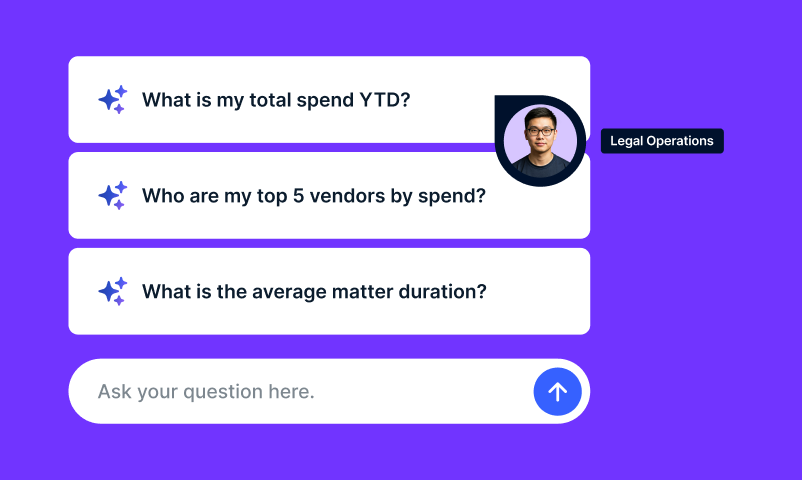
Several years ago, the global Corona pandemic emerged. We all experienced different waves, had to be flexible, and changed our way of working as we knew it previously. We want to sum up: what have law firms and their clients learned from COVID–19 and what changes to their systems, working practices and organizational structure have they made and are retaining post–pandemic?
Rather than dwelling on the immediate past, we will focus on the positive outcomes for the future. We can also say that at this stage of the pandemic, much is still relevant – it is not over yet – with new variants and the possible results of easing the lockdown and the lack of 100% vaccine coverage – the legal profession will need to continuously deal with challenges and retain a positive perspective. Nobody planned for Covid-19 and knows what is coming next, but there will be something! If Covid-19 is like other “catastrophic” events, such as flood, fire, or other external event, many law firms and their clients had business continuity and resilience plans in place, some parts of which allowed them to respond quickly and positively. Others, however, did not and had to face major problems.
WHAT HAVE WE LEARNED?
So, what have law firms and clients learned, what came out of Covid-19, and what will the longer-term “business as usual” look like? We have spoken to many Legal Operations Managers and GC in corporate legal departments. We also have an excellent ongoing dialogue with many law firms. We have gained insight into what they did in the immediate lockdown scenario and what they do in the (hopefully) post-pandemic world.
- Remote Working: As we know, clients and their law firms had to immediately go into lockdown near the start of the pandemic and institute remote working for almost all their staff. One client organization had to set up remote working for 75,000 people and did it successfully. Many organizations, not just in the legal world, are rethinking their longer-term office requirements and whether their current capacity should apply to the future. No one is saying that the traditional office will disappear. Still, all our contacts believe there will be a significant re-evaluation of the accepted norm to provide a desk for every individual.
- Greater need for technology: Lockdown also required a swift move to technology that supported home/remote working – at a scale never envisaged. Some law firms and in-house departments had already implemented a degree of technology and support for people to work from home (WFH), but the pandemic meant that this had to be done very quickly with almost no notice. Immediately, Zoom, Teams, Skype, or whatever became required for any meeting and for work colleagues to maintain visual contact with their peers. Tools to enable collaboration and communication have become vital, leading to a massive take-up of document-sharing applications, electronic document signing, and instant messaging systems. Additionally, those responsible for IT must ensure that data and access security are not compromised! Other applications within legal departments manage work, including workflow and case management, complete contracts access and administration, eDiscovery, IP systems/brand protection, e-billing/spend management, law firm instructing (including RFPs), and matter progress tracking.
- Flexible business priorities: For clients, there was an immediate re-evaluation of their business priorities, and what seemed like a sensible plan at the beginning of 2020 was suddenly thrown into confusion. For example, one client realized that their customer call centers could not continue as they were and had to be home-based with all the supporting technology that went with that. Some organizations, such as airlines, faced an immediate financial crisis as thousands of flights got canceled, and the business went into survival mode. All clients have said that as a priority, they dropped all non-core tasks/processes and focused on what the business needed to survive.
- Agile workflows with internal clients: Certainly, one lesson learned from the pandemic has left many corporate legal departments realizing that they must be more agile in how they approach working for their internal “clients.” One GC has said that the in-house lawyer must be more self-critical and demonstrate how they add value to the business. This will involve being more flexible, preparing to adopt new roles as required, and showing how the legal team can influence the rest of the organization. Another GC said that the in-house team must focus on taking a more “risk management” approach and that mitigating risk for the business will be even more critical. Also, communicating back to the business on what they are doing is vital, as it shows how their work has a positive ROI (return on investment).
- Higher value requirement from law firms: There is an expectation from several clients we have spoken to that they want their external law firms to be more proactive and expressed disappointment that they were not anticipating their client’s needs. One client said that just sending a newsletter in response to the pandemic was not enough, and he expected more engagement from his outside law firms. Some clients were looking for much more from their firms – not only legal advice but clear added value, a more cost-driven approach, and to come up with ideas to challenge the status quo. They also expect any relationship meeting to be more meaningful, with better cost tracking and post-matter reviews being essential. At panel review time, these clients will seek a positive response from prospective external law firms.
- Greater need for knowledge exchange: Some law firms have already implemented knowledge management systems, but now all organizations realize that there must be more formal ways for sharing information within the law firm and potentially with the clients. Certainly, within law firms, the introduction of a high degree of remote working means there is little or no opportunity for easily sharing information or even asking the quick question that a chat around the water cooler or walking down the corridor to speak to a colleague can achieve – i.e., informal knowledge sharing. Now, this knowledge sharing must be more formal – calling for the development of knowledge management or “legal know-how” systems – and this means not just using the firm’s document management system but building data stores of indexed information that is easy to find and reflects the law firm’s collective experience.
- New management methods for legal staff: More than one in-house counsel believes there will have to be an innovative approach to managing and staffing legal work in the future. For example, more generalist work is in-house, leaving the specialist work to external sources. Rather than taking each matter and deciding on internal or external, clients can go even further and use e-billing technology to break a matter into phases, with some phases done internally and others done externally.
- Changed working models: While much legal work gets done by remote working and good technology and communication systems in place – some work done by the legal department and the law firm is less easy to do remotely, for example, HR or disciplinary issues. It is not easy to have specific conversations over a video link; they must be face-to-face. We believe law firms and clients must find a solution to this problem. However, working from home can have other benefits, like allowing for more flexible working hours. Some individuals may find it easier to work unsocial hours – maybe in the early morning or the evening and this can be useful if working with non-Europe based colleagues, for example, to cover the working time in (say) the USA or Asia.
- Mental and physical health of employees: One key feature that has come to the fore during the pandemic is that of health and well-being – both mental and physical – not just in the workplace but also in the home and broader society. Many organizations were quick to try and assist staff working in a new environment in various ways, for example, by giving grants for purchasing specialist chairs and equipment. Certainly, if staff continue to work from home in the future, even for only one or two days a week, maintain this kind of support. Although many organizations were already proactive in this area, more companies now provide access to CBT and other stress management services. They are more willing to discuss these issues openly and without stigma. However, there are now new debates about the vaccination status of staff returning to the office, with some organizations saying that unvaccinated staff may not be allowed to return. This issue will no doubt run on over the coming months.
- Dealing with work backlogs: Obviously, the pandemic impacted those law firms involved in the justice system from the start of the pandemic – for example, the UK suspended jury trials at the beginning of the first lockdown. Some other cases did continue as the courts introduced video conferencing and other technology. Even though jury trials have been resumed, with strong COVID-19 precautions in place, there is a massive backlog of cases in all the courts caused by the requirements of remote working and other restrictions placed on all parties involved.
IN SUMMARY
So, what has living and working through the pandemic in the past two years taught us? The pre-pandemic trend for some people to work from home became the “normal” way for those who could work. No doubt there will be a return to the office, but many people believe we will see a more hybrid way of working with WFH (at least part-time) becoming accepted. However, we believe that working from home will not be the universal standard as organizations have realized that a degree of office-based working is still needed – especially for the less experienced staff who require more personal mentoring and colleagues’ support in the real than the virtual world.
The pandemic accelerated developments in collaboration and communications technology. These applications will become more mainstream in our work and personal lives.
Finally, all organizations working in the legal profession know that changes are inevitable, and the pandemic has highlighted the need for a review and transformation of organizational structures, new ways of working, a re-prioritization of projects, and increasing flexibility and agility in the approach to delivering successful outcomes.
Written by Bryan King











